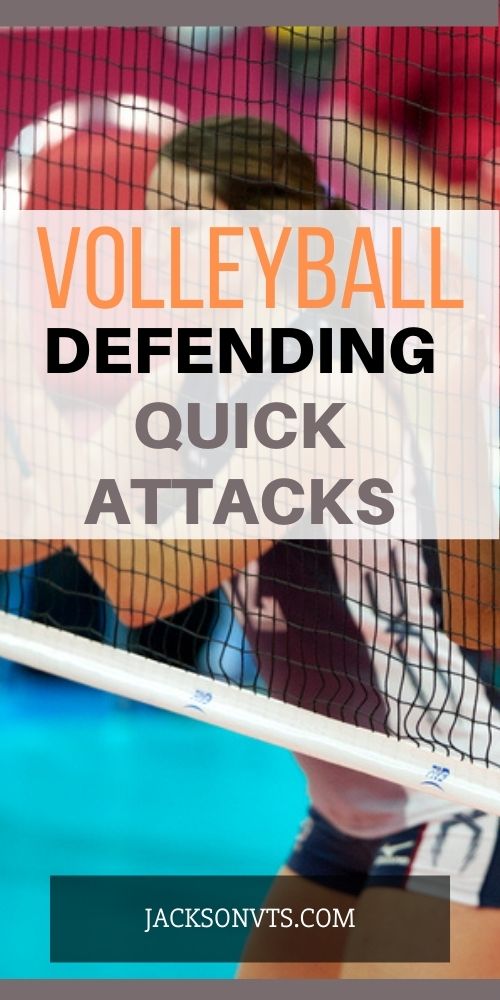Here, learn volleyball digging position for stopping the middle attack.
First thing you need to do is understand “base defense”. This the position you want to be in for playing defense.
3 things to be ready for on defense….
Overpasses. In case the ball is overpassed, you need to get to the ball quickly to make the play.
The second thing base defense defends against is the setter dump. The setter dump is when the ball is passed to the setter and the setter sends the ball over the net to try and score. If a team is ready in base defense, this ball will be easy to dig.
The third thing that base defense helps a team prepare for is a quick attack. The quick attack is when the ball is passed to the setter and the setter sets quickly to a hitter. Base defensive position helps you be in position to dig the quick attack.
For base defense, the 3 back row players will form a triangle with the two wing players near the sideline. The other player is back deep near the endline.
Base defense position usually works well because it defends well against the overpasses, the quick attack, and the setter dump. The two defenders near the sideline/3 meter line should be ready for an overpass.
For digging, is a general rule to always start near the sideline and move into the court to dig. If you start from inside the court, it’s hard to get to the sideline to dig a hard driven ball. So for digging, start near the sideline (or endline if you’re the baseline player) then move into the court to pass.
The middle back defender should be reading the block to get a better idea of where to be on defense. Rotational defense is also an option. This is where the middle back defender rotates to the sideline to dig the ball that’s hit down the line to the corner.
How to Dig Quick Attacks – Volleyball Digging
Here are my tips for digging the 3 common quick attacks from middle hitters. The 1 set. This is a quick set in front of the setter to the middle attacker. The back 1 set which is a quick set behind the setter. The 3 set which is a set that is halfway between the middle and outside attacker.
The block is the first line of defense. It’s the job of the middle blocker to follow the opposing middle attacker. As a middle blocker, you need to stay with the middle attacker. Stay directly in front of the middle attacker. Once the middle blocker has set the block, the outside and weakside blockers will know where to go to get into position to block. It’s the job of the blockers to funnel the ball to the defenders.
Inverse Relationship of the Blocker/Defender
Players have an inverse relationship meaning when the block moves to the left, the defenders need to move to the right. And vice-versa.
How to Defend the Back 1 Attack – Volleyball Digging
The middle blocker needs to read the middle hitter to see when they are starting to approach to attack the back 1. The left front blocker should help out the middle blocker.
If the there is a hole between the left front and middle front blockers, the middle back defender should shift to to the left to dig the seam.
If the left and middle block is closed, then the middle back defender needs to shift to the right to dig.
The left back defender should stay wide and short, ready for the tip since there is a lower chance the attacker will try to spike through 2 blockers. The right back defender should stay wide to dig the sharp angle attack.
How to Defend the 3 Attack – Volleyball Digging
The middle blocker needs to read the situation early and identify when the middle attacker is starting to approach near the right. Since the middle attacker is near the right front blocking zone, the right front blocker should help block the 3.
If there is a hole between the middle and right front blockers, the middle back defender needs to shift to the right to dig the seam.
If the right and middle blocker are closed, the middle back defender shifts to the left to dig angle. Right back defender stays wide and short to defend the tip. The left back defender stays wide to dig the sharp angle.
If there is a tip to the middle of the court, it’s the left and right back defender’s responsibility to cover this tip. It’s usually best to have the left back defender cover the tip because often the right back player is the setter. We want the setter to take the second ball as often as possible.
If you enjoyed these tips and would like to keep it close to you at any time, just save this pin to your Pinterest Volleyball Training Board.

Home › How to Play › Volleyball Digging
